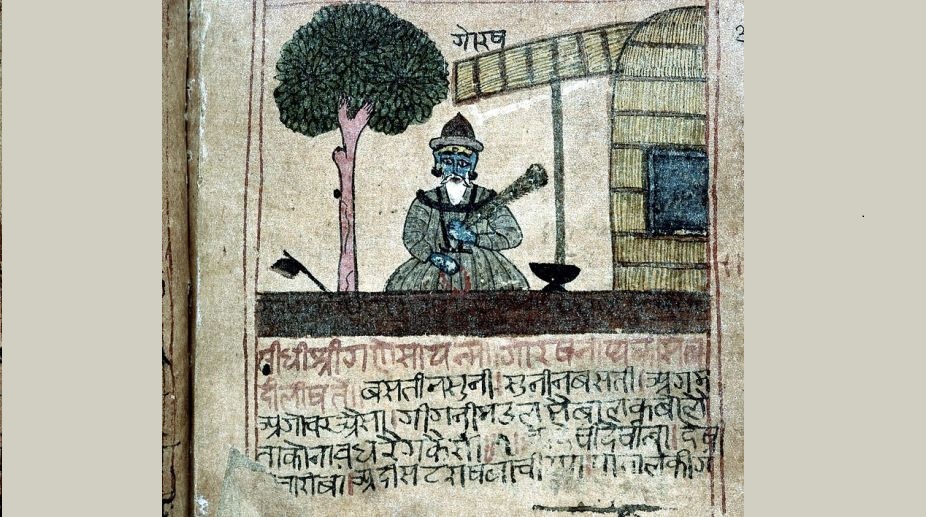Sangam bathing capacity increased to 2 lakh devotees per hour
The Uttar Pradesh government has undertaken monumental efforts to ensure a seamless and spiritually significant bathing experience for devotees during Mahakumbh 2025.
Students in government schools of Uttar Pradesh will be learning about the lives of religious gurus from the Nath sect now.

A painting showing guru Gorakhanath sitting under a tree outside his hut. (Photo: Wikimedia Commons)
Students in government schools of Uttar Pradesh will be learning about the lives of religious gurus from the Nath sect now. Chapters describing the life and times of gurus such as Baba Gorakhnath, Baba Gambhirnath and Swami Pranavananda have been added to the textbooks for classes 6, 7 and 8, which will be distributed among students after the schools reopen in July after summer vacation.
The Nath sect is the powerful Hindu religious order to which Uttar Pradesh Chief Minister Yogi Adityanath belongs. According to reports, the decision to include the Hindu saints in the curriculum was taken by the UP Education Board after the CM said many renowned personalities were ignored by previous state governments.
Advertisement
Officials in the basic education department are of the view that the Nath sect’s tremendous contribution towards the society in eastern Uttar Pradesh should be known by children.
Advertisement
Basic shiksha adhikari, Gorakhpur, Bhupendra Narayan Singh said, “The biographies of Baba Gorakhnath, Baba Gambhirnath and Swami Pranavananda, martyrs Bandhu Singh, Pandit Ram Prasad Bismil etc. will be taught to students. Baba Gorakhnath is part of curriculum of Class 6 book ‘Mahan Vyaktitwa’ (great personalities).”
“More than 8,36,975 books of Class 1 to Class 8 have reached us and the process of sending them to block resource centres and schools has been initiated,” he said.
The biography of Swami Pranavananda, disciple of Baba Gambhirnath, will be taught to Class 8 students.
Besides the Nath sect saints, the life history of Bharatiya Janata Party (BJP) leaders Syama Prasad Mookerjee and its ideologue Deen Dayal Upadhaya has also been included in the school books.
Freedom fighters like Shahid Bandhu Singh of Gorakhpur, Rani Avanti Bai and warrior brother duo Aalha-Udal have also been included in the syllabus.
According to The Pioneer, Congress spokesman Amarnath Agarwal called the move an attempt at “sowing the seeds of hatred by saffronising education”. Samajwadi Party spokesperson Sunil Singh Sajan asked why Ram Manohar Lohia, the socialist ideologue of the party led by former chief minister Akhilesh Yadav, has been ignored.
Who was Baba Gorakhnath?
Gorakhnath was an 11th century Hindu saint who is credited with making the Nath sampraday a powerful spiritual movement across India. There is no clear account about the place which Gorakhnath hailed from. While some claim he was from Peshawar others say that he was from eastern India.
According to Nath legends, Gorakhnath travelled far and wide traversing the length and breadth of the Indian sub-continent as well as Nepal and Sri Lanka. Though not the founder of the sampraday (Guru Matsyendranath founded the sect in the 10th century), Gorakhnath remains the most influential.
The city of Gorakhpur is named after him. The city, which is the base of the Nath sect, is home to Gorakhnath temple (or mutt) – the most famous religious monastery of the sect in India. It is also believed that Nepal’s Gorkha community (also written as Gurkha) derived their name from Gorakhnath.
Advertisement